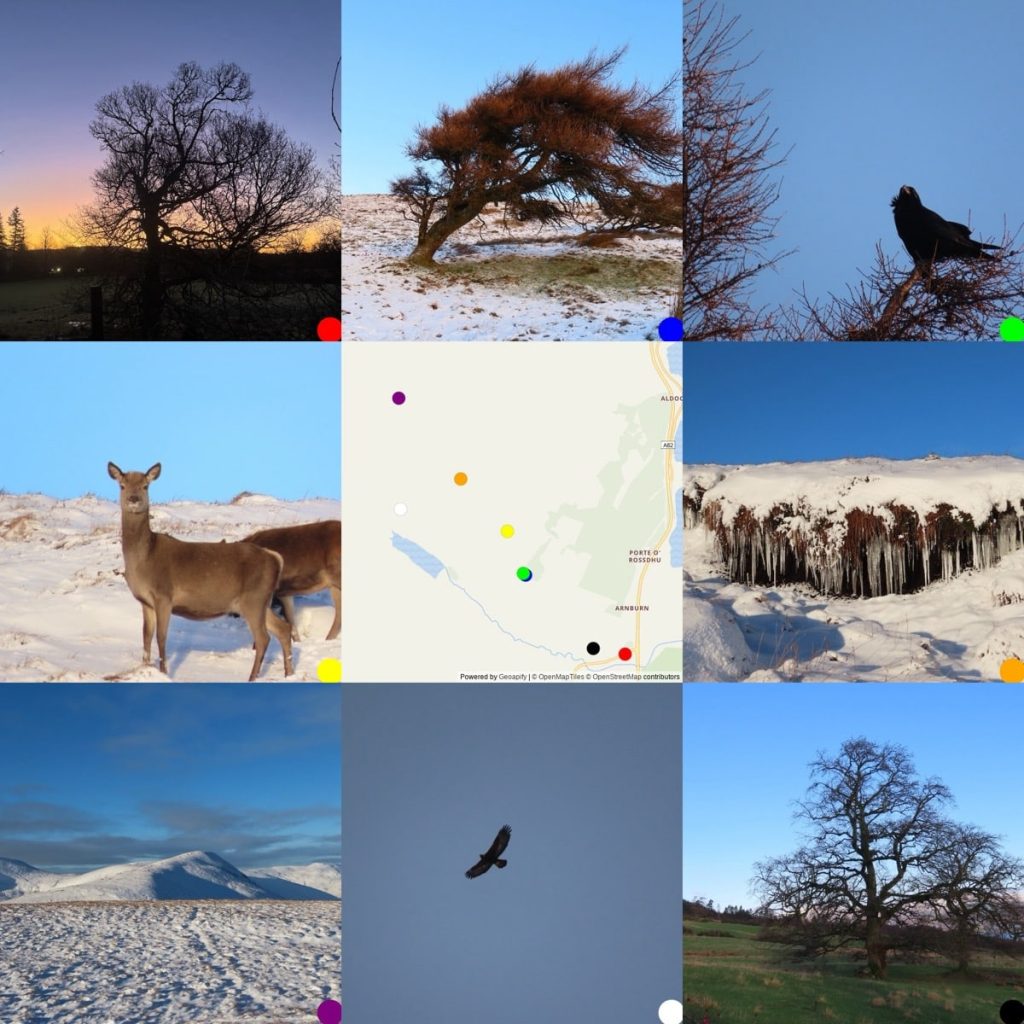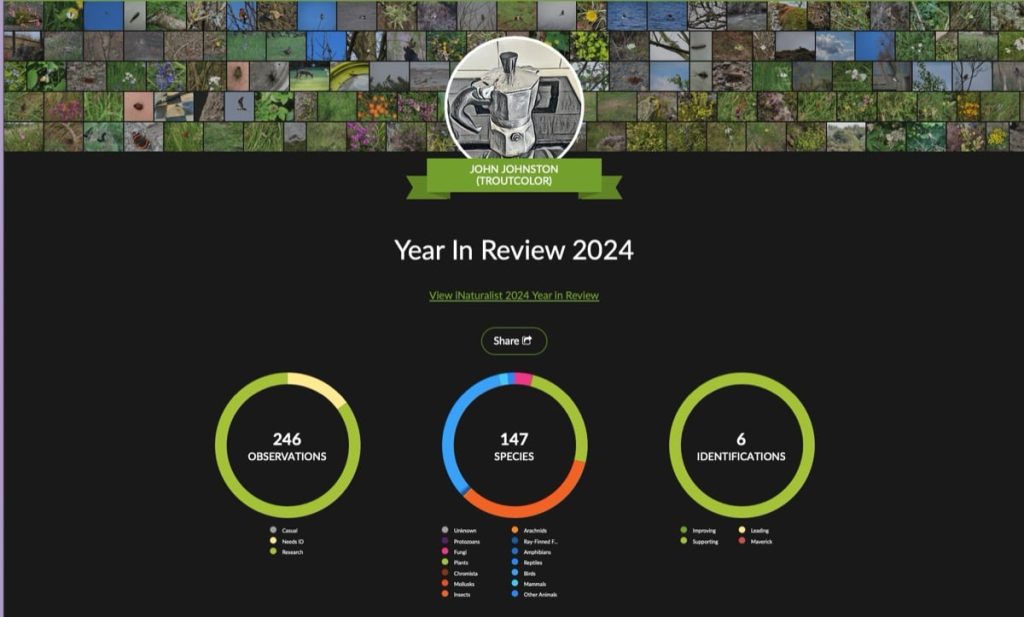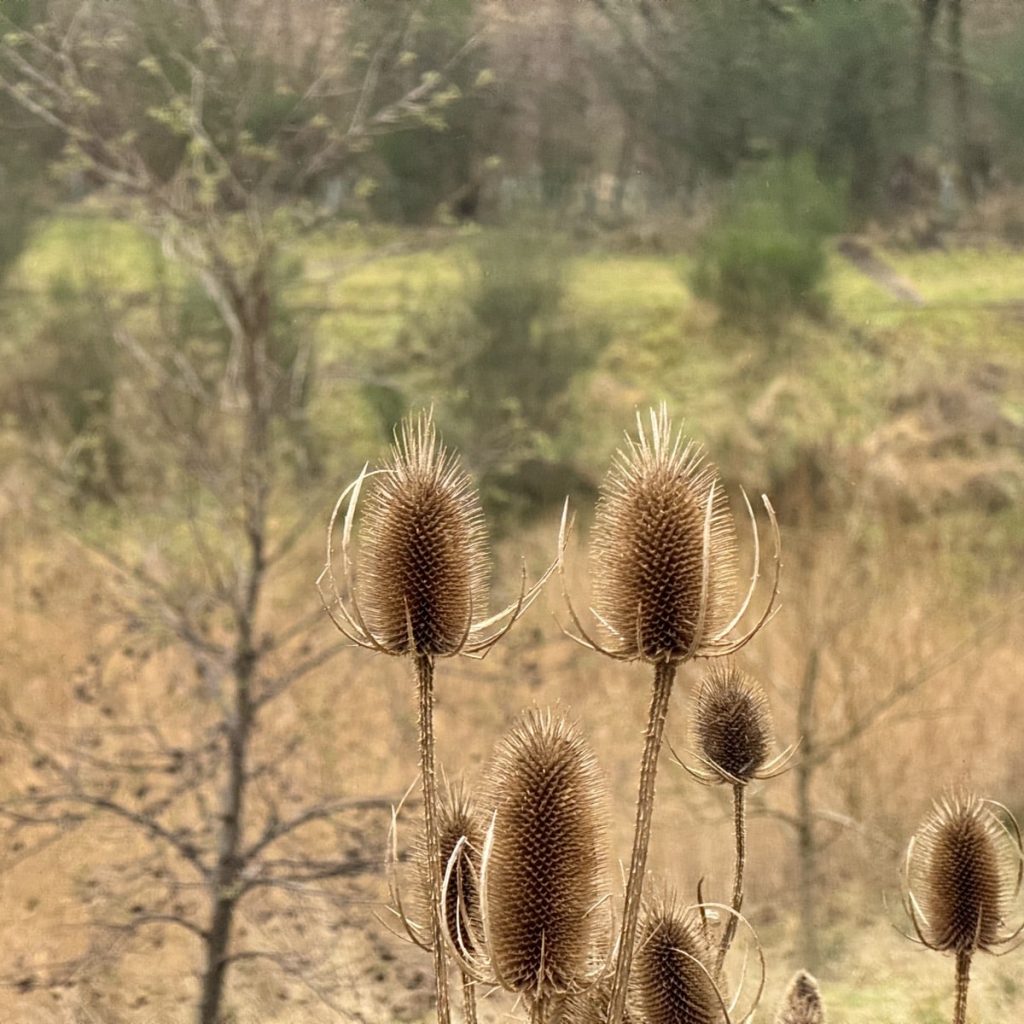I continued to try and note one ‘natural” thing every day. Fell short, especially towards the end of the year. Leaving for work and getting home in the dark does not help. Here is the 2024 list. I don’t keep the online list up to date, just every month or two.
I also tried to record/podcast each month, but stopped after August. I do enjoy the process. But I suspect I had an audience of none.
I am going to continue in 2025, perhaps making each note a little longer, 2 or 3 sentences. So far:
2025-01-01 Rainy morning. Dumping the rubbish. A very black and shiny crow was making a lot of noise on a neighbour’s washing line. Round the front the traffic is sparse. Across the street, in a pollard, a blue tit is calling.
2025-01-02 Clear blue skies and frost. High tide, at the end of a small rocky outcrop a heron hunches away from the sea and cold. A starling perched high by drain hole under the eaves making experimental sounds.







